Introducing our Senior Designer, Tim Brann, with a few questions to get to know him and hear about his background and passions.
Before OXygen, where have you been working for the last 5 years and what on?
Originally I trained to be a Product Designer, as physical objects were the focus of my design education up to that point. While at University, I worked at a leading agency, designing consumer products like telephones, radios and kitchenware for manufacture. I also worked on packaging, user manuals and other digital and printed reports. After graduating, I had the opportunity to freelance for a number of smaller agencies and while I still enjoyed the process of designing products, the opportunity to take on a greater variety of projects including branding, graphic and digital design, in particular for charities and not-for-profits, helped me to re-evaluate what I wanted to do. Over the last 4 years I have gradually shifted from working as a Product Designer to a more multi-disciplinary one, with my focus now on branding, UI/UX and web design.
What originally made you want to become a designer?
I love problem-solving. Though the design industry is ever evolving – there seem to be new niches and specialisms popping up every minute – to me, regardless of the discipline you work in, the ability to solve complex problems is the most important skill a designer can have. The ability to work with a detailed brief and clearly defined sets of parameters, or sometimes no direction and a blank canvas, and end up with a solution that is as intuitive as it is visually compelling, is where a designer can really make an impact, and is what I enjoy most about my job.
What is your approach when starting a project?
Every project is unique, it’s one the great things about working in design! However there are key steps and processes that are vital to the success of each project. A detailed briefing session with the client, where the deliverables are clearly defined, and where we can gain a detailed understanding of what makes the organisation tick and what they are looking to achieve, helps to provide strong foundations for every project.
Design is a collaborative process, and throughout the brief we constantly engage with the client, giving them the opportunity to discuss initial design concepts, provide feedback and inform future design decisions.
Which project you are most proud of and why?
I’m really proud of the website we launched for Charity People earlier this year. It was a complex project, helping to integrate their existing recruitment systems into a new content management system. Equally, it overhauled the user experience of the site which previously was hard to navigate, had lots of duplicate content and didn’t truly reflect the great work Charity People do. Having previously created a comprehensive set of brand guidelines, it also gave us the opportunity to align the new site with new colour ways, iconography and imagery. The result was a much more interactive, easy to navigate site that the client was delighted with, and in its first few weeks has seen a 40% increase in traffic.
Who is your dream client?
I’m really excited by the work The Black Curriculum are doing, both in lobbying to broaden the National Curriculum to include teaching Black British history, something I have been trying to educate myself on further in the last few years, as well as running free courses to teach young people about Black British culture through music, the arts and many more topics. I think the work of think tanks like the Runnymede Trust is also particularly important, especially at a time when the UK is experiencing significant increases in hate crime (recorded incidents have almost doubled in the last 5 years) and when the government’s Race Report insinuates that institutional racism in the UK no longer exists.
What are you most excited about achieving with OXygen?
The idea behind OXygen has existed for a while, so it’s very exciting to get it off the ground! There are many great things that we hope to achieve. The main drive behind OXygen was the opportunity to help organisations grow and develop through branding, design and strategy. Design can be a difference maker, a powerful tool for social change, and in the last 5-10 years we have seen how in the commercial sector, design driven businesses have flourished compared to their competitors. I can’t wait to work with some great organisations to use design thinking to help them achieve their missions and goals.
Design as a whole has been forced to look introspectively at its diversity in recent times. 78% of the UK’s design workforce are men (in some disciplines, such as product design, this is as high as 95%), despite the majority of students studying design at university being women. Movements such as ‘Where are the Black Designers’ have also highlighted the lack of racial diversity in creative disciplines. Aside from the clear ethical issues, homogenous creative organisations inherently lack the ability to produce inclusive solutions (Caroline Criado Perez’s book “Invisible Women” highlights, amongst a number of topics, the biases in everyday objects and experiences caused by a world designed by predominantly white, affluent men).
Creativity thrives off diversity and I’m excited to continue to collaborate with individuals from a range of backgrounds at OXygen, as well as to continue to promote accessibility and inclusivity in the work we do.
Tim is a multi-disciplinary designer, with many years of experience designing graphics with impact and seamless user experiences. He holds a BSc in Product Design from Brunel University London. Initially designing consumer products, he has worked on a diverse range of projects from 3D installations, packaging through to branding and website development.
Tim is passionate about design’s use as a tool for positive social change, and his main areas of interest are racial inequality and children’s social care.



